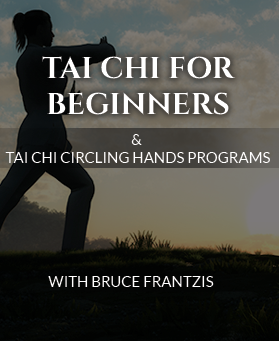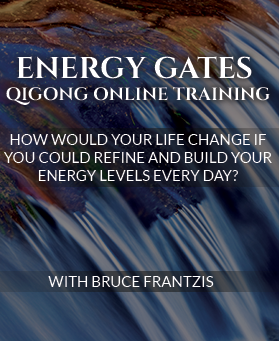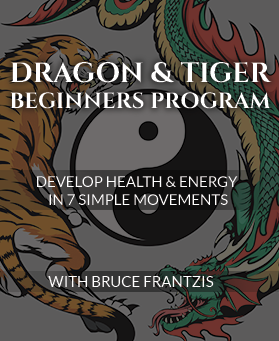Looking back on my training with him, it is obvious to me that much of what Ueshiba’s aikido had
in terms of the physical techniques came from jujitsu.However, the chi that he manifested when he did aikido appears to have come directly from bagua, with some partial influence from hsing-i as well.
Where did he get his power from?
I saw people in Japan in the late 1960s that were very skilled at the type of Daito Ryu aikijitsu, a
form of jujitsu, upon which Ueshiba based his aikido. But none of them was able
to manipulate chi as subtly or powerfully as Ueshiba or even to articulate the theories of ki (chi) basic to aikido and bagua. Actually, Ueshiba was far beyond aikijitsu’s level of sophistication. His ability to enter, turn, attract and then play with and lead an opponent’s chi and mind was phenomenal. In Japanese history, there was no martial art to compare to it, and no one else in Japan could do anything like it.
In his dojo, I often heard that he spent many years in China and only afterwards returned to Japan
with this miraculous chi-based aikido ability. It is my opinion, based upon personal memories of him and my technical analysis of his films 25 years after his death, that it is completely reasonable to assume Ueshiba studied bagua while he was in China.
The entering, turning and leading of one’s opponent, as well as the hundreds of subtle energy projections of aikido are fundamental bagua techniques that existed long before Ueshiba’s birth. Because of this, I believe that Ueshiba learned bagua while he was in Manchuria, China.
Before and just after World War II, it would have been extremely politically incorrect and counterproductive for Ueshiba’s organization to have credited the Chinese with part of his “new” martial art, given the chauvinistic military and nationalistic bent of Japan in that era.
‘Iron is full of impurities that weaken it; through forging, by exposure
to heat, cold and hammering, the impurities are forced out and the iron
is transformed into razor-sharp steel. Human beings develop in the same
fashion.’ – Morihei Ueshiba
Ueshiba had great internal power. Internal power is almost incomprehensible to the Western mind, which is conditioned by the overt displays of external power in films and on television. External power is like seeing someone with a wallet stuffed with $100 bills—you automatically assume this is a wealthy
person, which may or may not be true. However, an extremely wealthy person can conceal wealth and have a very thin wallet, carrying only one credit card that has a million-dollar credit line (which is the nature of internal power).
Things are not always as they seem
In Ueshiba’s case, this was very true. When I was with Ueshiba, he was in his eighties and of small stature, yet incredibly strong. When he was old and near the end of his life, his students would carry him into the dojo on a stretcher. He looked extremely weak and frail. However, he would suddenly gather his chi, stand up and toss exceptionally strong men around like rag dolls. Afterward, he would return to the stretcher and resume being a sick old man.
With Ueshiba, you began to expect the paranormal. I still vividly remember that he could get behind you so quickly it was as if he had disappeared. The same is true of top bagua people. You could have Ueshiba clearly in your sight, and suddenly he was gone. Then, with equal suddenness, he was back. Ueshiba would then fake a hit and then joint-lock and/or throw you to the ground. In contrast, bagua people
typically would actually hit you first and then throw you on the ground.
This “now you see me, now you don’t” is one of the great martial strengths of bagua adepts. Unlike a boxer or karate person whose hand you can see coming at you, bagua people have an incredible power and a strange kind of speed that is so subtle you cannot perceive its origin or destination.
In watching films of the late master, one can see Ueshiba clearly demonstrating many of the chi principles of bagua. But while these chi principles are referred to in the vaguest of terms in aikido (when they are spoken about at all, which is rare), in bagua the critical energy principles are articulated in great depth and are specified in a systematic way. This valuable ability to pass on previously accumulated information intact, so the next generation can accurately reproduce the previous generation’s skills, is part of the genius of the Taoist internal arts.
The Taoist internal martial arts and qigong (chi gung/chi kung) also clearly articulate the health, healing and longevity chi methods that are generally absent in modern aikido. I believe that lovers of aikido will find it both interesting and beneficial to explore bagua chang and qigong in order to gain practical insights into what O-Sensei Ueshiba taught.




0 Comments